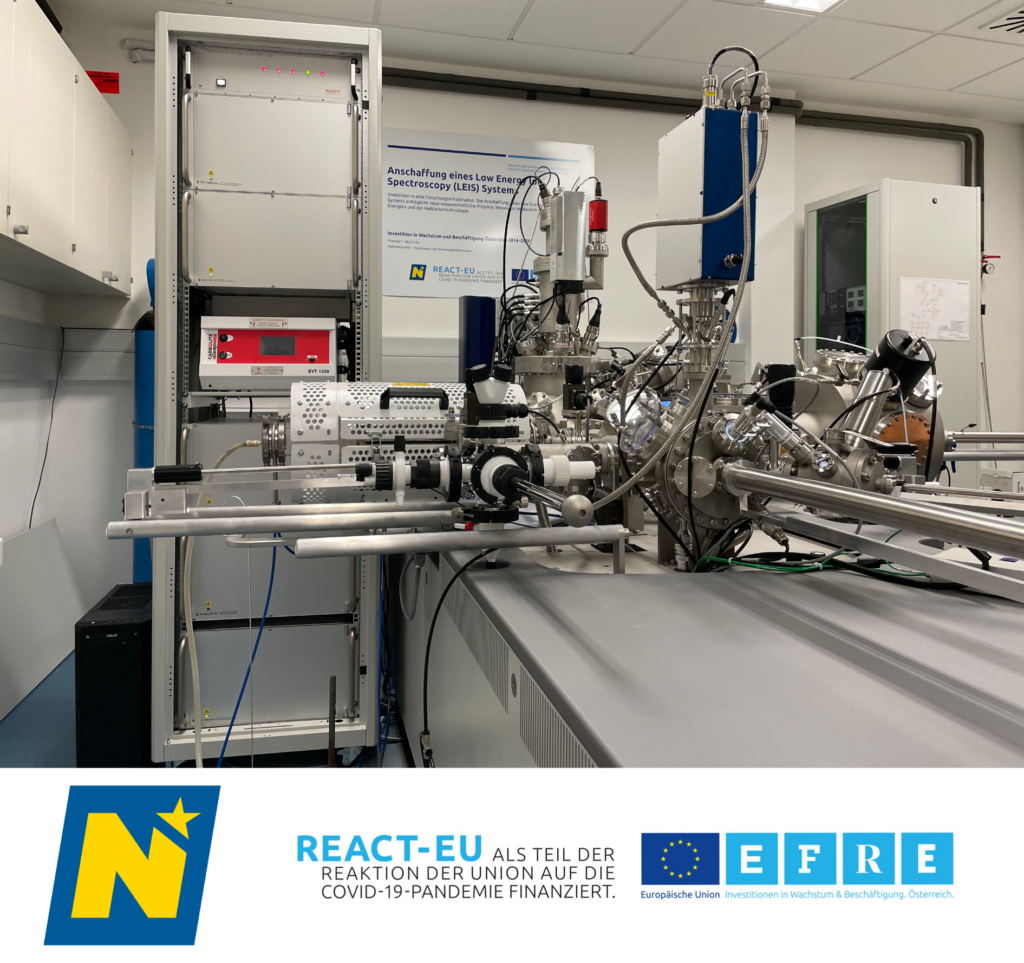Low energy ion scattering spectroscopy (LEIS) uses noble gas ions to probe the outermost surface of samples. It allows the determination of the outmost atomic layer of materials and the elemental composition can be quantified with unprecedented accuracy. Using different noble gases (He, Ne, Ar), almost all elements can be analyzed and even distinguish between close masses (e.g., Au/Pt, Cr/Fe/Mn/Co/Ni). By applying a time-of-flight (Tof) mass filter the detection limit especially for light elements can be significantly improved.
Dynamic sputter depth profiling using an Ar+ sputter gun allows in combination with the inherent atomic resolution of LEIS, allows a layer-by-layer characterisation of the sample.
Combined with our analytical tools in the ELSA cluster, surface characterisation with atomic resolution as well as chemical analysis can be achieved.
Features attached directly to the UHV system:
- In-situ heating stage up to 600°C
- Ex-situ heating within UHV up to 900°C
- Tube furnace up to 1200°C with various atmosphere (e.g., Ar, Ar/H2, N2,…)
- O2 or H2 plasma treatment
- Physical Vapour Deposition (PVD) of thin layers (currently: Cu, Ni, Zn; many more possible)
- Electrochemical Cell
- High pressure cell up to 10bar under various atmosphere (e.g., Ar, Ar/H2, N2,…)
- Vacuum suitcase to transfer to ELSA
Applications:
- Catalysis
- Semiconductors
- Corrosion
- Alloys
- Ceramics
- Polymers
- Powders
- And many more
Sample requirements:
- Max area: 12-12mm
- Max height: 8 mm
- Nature: conductive, semi-conductive, insulative
- Flat samples prefered
- Measurement area: 200×200µm – 2500×2500µm
The following publications show examples of LEIS data measured at CEST:
- Visualizing electrochemical zinc deposition and the role of a polymer additive in the crystal growth mechanism – Tiétcha – Materials and Corrosion – Wiley Online Library
- Alkaline Cleaning of Zn–Al–Mg Hot-Dip Galvanized Steels: Mechanisms and Surface Oxide Chemistry – IOPscience
CEST thanks the state of Lower Austria and the European Regional Development Fund for their financial support under grant number WST3-F-542638/004-2021.

